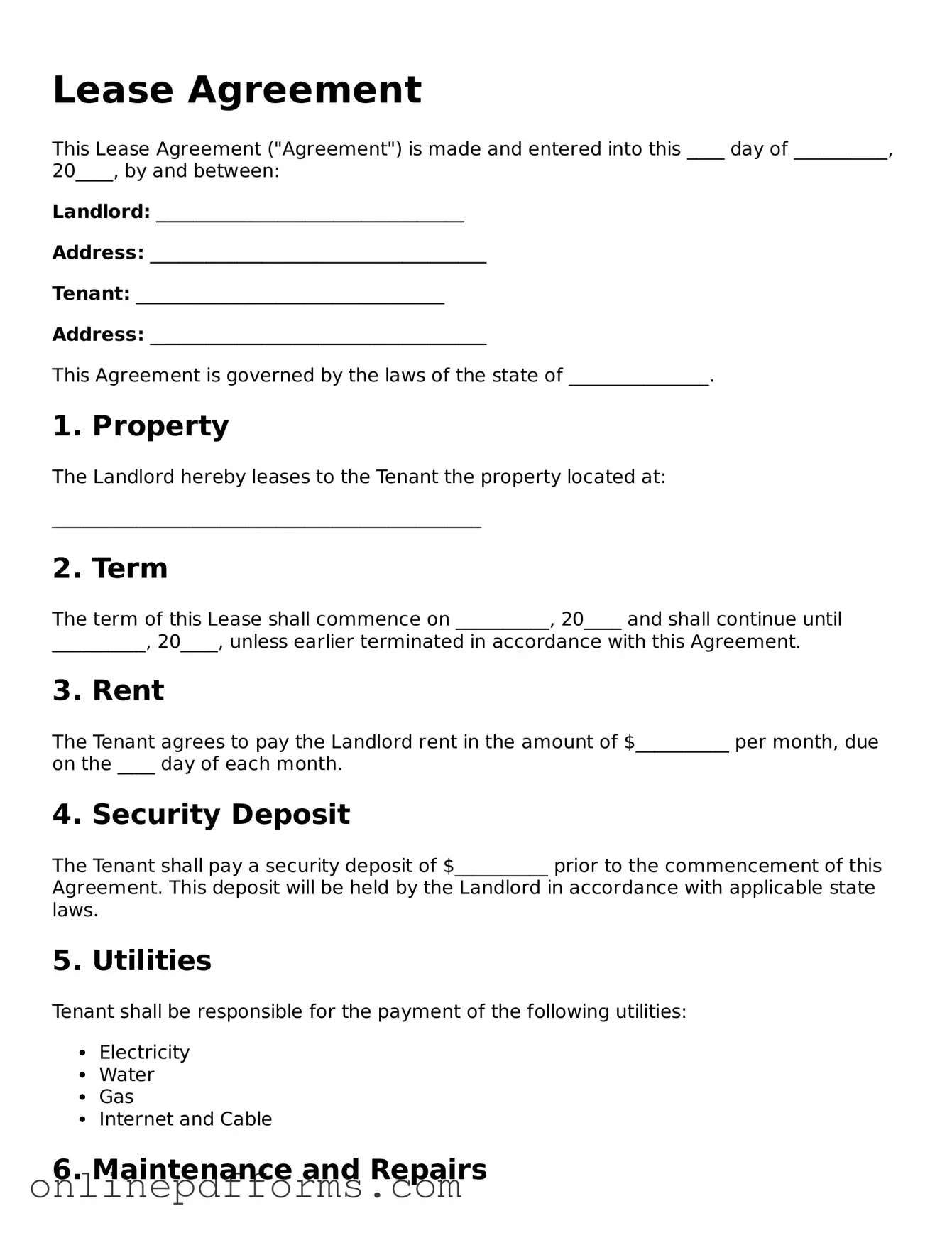A rental agreement is a document that outlines the terms and conditions under which a tenant rents a property from a landlord. Similar to a lease agreement, it specifies the duration of the tenancy, the rent amount, and the responsibilities of both parties. While a lease agreement often covers a longer term, typically one year or more, a rental agreement may be used for shorter durations, such as month-to-month arrangements. Both documents serve to protect the rights of the landlord and tenant, ensuring clarity in the rental relationship.
A sublease agreement allows a tenant to rent out their leased property to another individual, known as the subtenant. This document is similar to a lease agreement in that it details the terms of occupancy, including rent and duration. The original tenant remains responsible for the lease with the landlord, while the sublease creates a new relationship between the tenant and subtenant. Both agreements require clear communication of expectations and responsibilities.
A commercial lease agreement is designed for businesses renting commercial property. Like a residential lease, it outlines the terms of the rental, including the duration, payment, and maintenance responsibilities. However, commercial leases often include additional clauses related to business operations, such as zoning laws and permitted use of the space. Both types of leases aim to establish a clear understanding between the landlord and tenant, protecting their respective interests.
A tenancy agreement is a broader term that encompasses various types of rental arrangements. It can refer to both lease and rental agreements, covering residential and commercial properties. The key similarity lies in the intention to formalize the relationship between landlord and tenant. This document ensures that both parties understand their rights and obligations, which can help prevent disputes.
A property management agreement is a contract between a property owner and a management company. It is similar to a lease agreement in that it outlines responsibilities, including rent collection and property maintenance. However, this document focuses on the management aspect rather than the rental relationship itself. Both agreements aim to ensure that the property is well-maintained and that financial obligations are met.
A purchase agreement, while primarily used in real estate transactions, shares similarities with lease agreements in that both documents outline terms and conditions regarding property use. A purchase agreement details the sale of a property, including price and contingencies, while a lease agreement focuses on rental terms. Both documents are essential in defining the relationship between parties and ensuring that all terms are understood and agreed upon.
An option to lease agreement provides a potential tenant with the right to lease a property at a later date. This document is similar to a lease agreement in that it sets forth terms, including the rental amount and duration. However, it differs in that it does not create an immediate landlord-tenant relationship. Both documents aim to protect the interests of the parties involved, ensuring that expectations are clear.
A cohabitation agreement is a contract between individuals who live together but are not married. Similar to a lease agreement, it outlines the rights and responsibilities of each party regarding shared living arrangements. This document can address financial contributions, property rights, and other important aspects of cohabitation. Both agreements serve to clarify expectations and protect the interests of those involved.
A room rental agreement is a specific type of rental agreement that focuses on the rental of a room within a larger property. It is similar to a lease agreement in that it outlines the terms of occupancy, including rent, duration, and shared responsibilities. This type of agreement is often used in situations where individuals share living spaces, and it helps to establish clear boundaries and expectations for all parties involved.
